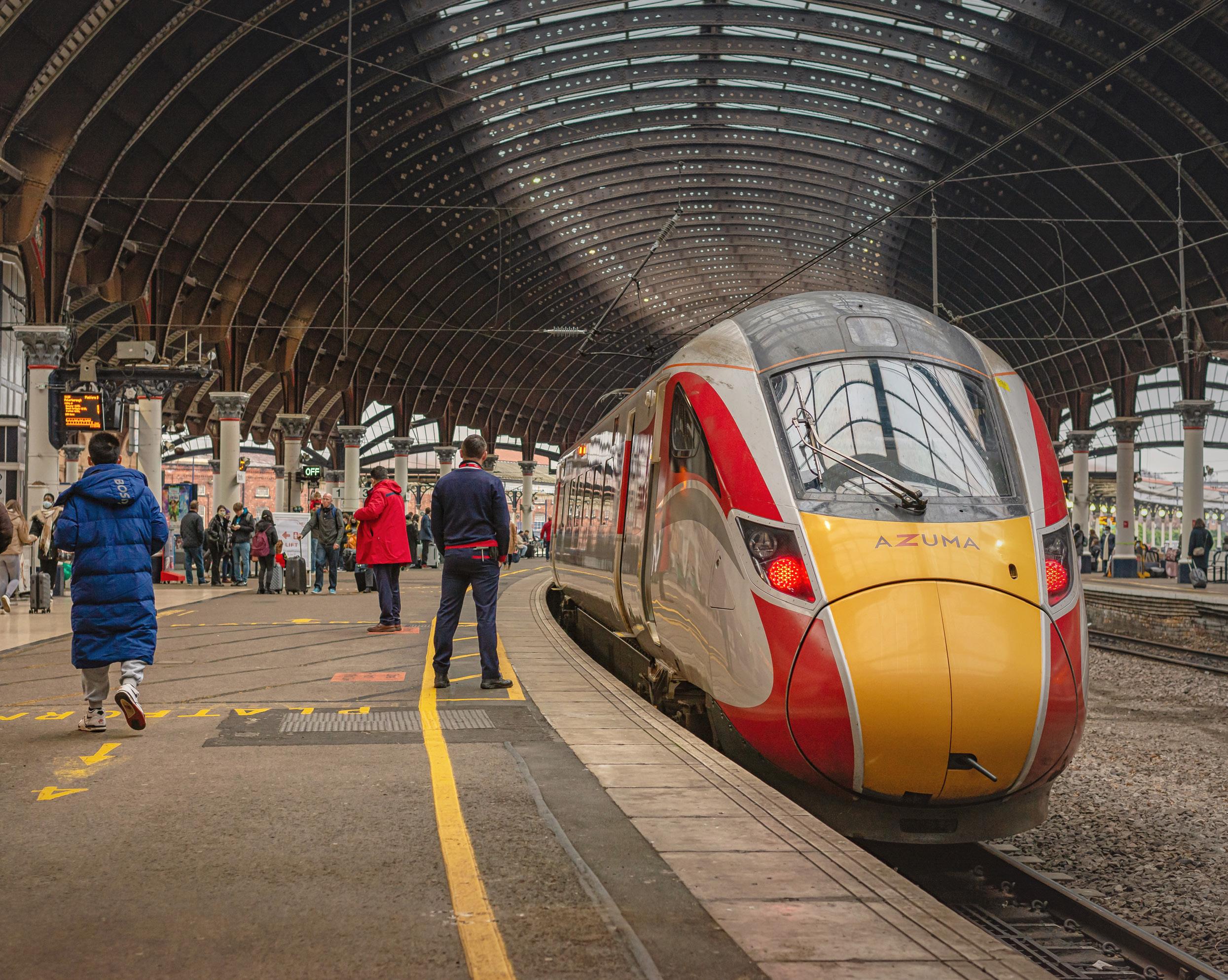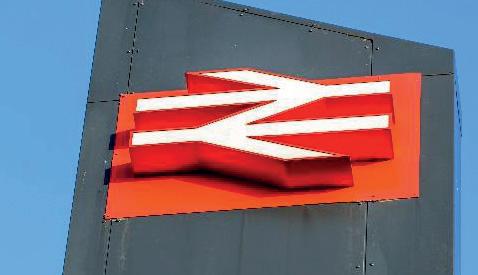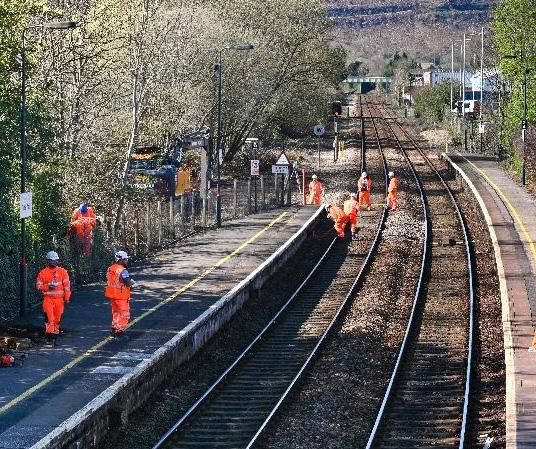

Introduction...
Welcome to the Railway Industry Association’s (RIA) review of the first year of the new Government, since the General Election in July 2024. This document looks at the progress made towards the ‘Key Asks’ set out in RIA’s 2024 Manifesto.1 The purpose is to provide a high-level view of progress for the rail sector, and highlight the steps needed over the year ahead. This document is part of our commitment to regularly review the progress the Government has made on RIA’s Manifesto ‘Key Asks’ from April 2024.
It is no secret that recent years have been challenging for the rail industry. A period of uncertainty in the market without clarity on which projects or programmes were coming to market when, or what the future structure of the industry will be, has led to particular difficulties for many businesses in the supply chain.
However, recent announcements in the context of the Spending Review, and 10-year UK Infrastructure Strategy suggest that progress is being made towards a number of RIA’s ‘Key Asks’.
Our first annual assessment has judged progress using three categories:


Key Ask fulfilled.
Whilst not yet delivered, there has been visible progress or announcements.
Progress is unclear – there is not yet visible evidence of progress.
We have based our assessment on information in the public domain. We have not speculated on activities that may be happening within Government but are not yet visible.
One of our asks has already been fulfilled: the King’s Speech included the Railways Bill to create Great British Railways (GBR), beginning the legislative process. This progress is welcome and gives greater confidence that rail reform will actually happen, having originally been set in motion with the Williams Review in 2018.
Our judgement is that there has been visible progress towards sixteen of our other asks, which we urge the Government to consolidate on in the year ahead. And in eight areas we have concluded there is not yet visible evidence of progress.
Whilst legislation remains important to establishing GBR and giving greater confidence about the structure of the industry, there are areas that Government and industry can – and hopefully will – progress immediately that do not require legislation or even new spending commitments.
We now need a long-term rail strategy. There is no way an industry of long-lived assets can plan investment, maintenance and renewal efficiently without a long-term strategy, which RIA has consistently called for. The plan needs to be firmly anchored in a vision for the railway the country will need in 2050, including passenger and freight growth projections, intermodal connections and climate resilience, and needs to go beyond physical railway assets to consider factors such as modern ticketing and integrated journey planning as well as how the railway facilitates housing and energy grid development.
We need visible and smooth pipelines of work that will support high skilled jobs and reduce costs. We have seen good initial steps towards a 10-year infrastructure pipeline and greater clarity on funding for major programmes, but there now need to be specific and steady investment plans, particularly for areas such as rolling stock and electrification.
We should be much more ambitious about harnessing private investment to bring additional funding and finance into rail. If Government can publish a clear position on which investment models it will look favourably on in rail, then there is no doubt that there will be investors keen to engage. RIA has been working hard to look at options in this space, such as around stations, and the link with housing development.
We need to turbo charge ‘partnership working’ between clients and the supply chain if we are going to get best value. We can and need to spread best practice wider, so that GBR starts with firm foundations. Together with the Mayoral Combined Authorities, these will be the key strategic clients for rail spending going forward.
Finally, we need to empower the industry – and our people – to deliver. This means central Government knowing when to step back from operational judgements that people closer to the front line are better placed to take. It does not mean localising every decision, or removing accountability, but it does mean thinking hard about who is best placed to take decisions and actively investing to make sure we have the right skills in place.
RIA looks forward to continuing to collaborate with the Government in the coming months to support further progress on this agenda.

Darren Caplan, Chief Executive, RIA

Publish a long-term strategy

Start by setting a firm date for developing and finalising a comprehensive long-term strategy for rail.
Labour’s Getting Britain Moving plan published before the General Election clearly identified the lack of a long-term rail strategy as hindering progress. The new Government has committed to setting out a long-term strategy through Great British Railways (GBR), but no date has been set out yet either for the creation of GBR, or to publish a long-term strategy for rail. Significant preparatory work was undertaken by the Great British Railways Transition Team which can be built upon, and RIA considers that it is realistic to consult on and finalise a long-term strategy within six to nine months.
Use the Rail Reform Bill to introduce a legal requirement to produce a long-term strategy.

The Railways Bill is expected to be published in the Autumn; however, the consultation did not propose a legal requirement to produce a long-term strategy. With no long-term transport strategy published for almost a quarter of a century, the Government has signalled intent to establish long-term strategies in a number of areas. However, for long-term strategic planning to be properly established as a way of doing business in the rail sector, a legal requirement to produce a long-term strategy (25-30 years), updated every five years, will help secure lasting change.
Government publishes a draft long-term strategy, and then engages with the railway industry before finalising.
Related to the above, there is not currently any clarity about when Government will publish a draft long-term rail strategy, and how it will engage with industry. RIA’s view is that the strategy needs to provide clear targets for passenger, freight and revenue growth, a strategic and steady programme of electrification, a rolling stock strategy, commitments to providing new rail capacity where it is needed, a plan to boost UK rail exports and a plan to get the skills into the industry which will be needed over the coming decade. By engaging with the industry prior to finalising, Government can test the deliverability of the proposals set out.
A long-term strategy must be translated into a prioritised pipeline of projects.

The Spending Review 2025 set out funding for the major rail projects that will be prioritised over the coming years, as well as regional transport funding. The Infrastructure Strategy has committed to publishing a pipeline of projects in July 2025, and RIA welcomes this firm commitment, as rail supply businesses need certainty in order to plan efficiently, keep costs down and invest in their workforce. The pipeline will need to provide detail sufficient to help businesses plan, such as the status of budget, business case and planning approvals. We hope that this evaluation will turn to green by the time of the next assessment.
Develop institutional arrangements to set and monitor progress towards outcomes, so there is independent oversight and accountability for the commitments.
The Government has reformed institutions with responsibility for overseeing infrastructure delivery, creating the National Infrastructure and Service Transformation Authority (NISTA). The Infrastructure Strategy highlights a more spatial approach to infrastructure planning, and gives NISTA objectives to streamline delivery of major projects, and provide assurance for priority projects. These are positive steps, and RIA would now like to see clear arrangements for independent monitoring of progress against a rail strategy (beyond just infrastructure delivery), where both NISTA and the Office of Rail and Road have potentially important roles to play.
What happens next?
Clear long term plans are essential to reduce costs and grow revenues sustainably. The Government now needs to work with industry to establish a long-term rail strategy which specifically supports wider Government objectives around economic growth, decarbonisation and housing. Much of the foundational work was previously carried out by the GBR Transition Team, and can be built on to produce an outline plan relatively quickly.
Deliver on industry reform 2

End the uncertainty and delays over rail reform by including the Rail Reform Bill in the King’s Speech.
The King’s Speech on 17 July 2024 set out significant plans for the railway, which included the Railways Bill to establish Great British Railways. The Government then consulted on legislation from February to April 2025 and is now considering the responses. The Railways Bill is now expected to enter Parliament in Autumn 2025.

Publish a clear and realistic timescale for reform.
The Government has not yet published a full timescale for rail reform, in particular the establishment of Great British Railways. However, the Government has announced that the transfer of passenger services into public ownership is expected to be complete by the end of 2027, with services transferring to a new public owned operating company, a subsidiary of the DfT Operator. This implies the potential for GBR to be established as a ‘track and train entity’ during 2027. However, there are a number of areas that still need to be consulted on, such as the GBR licence, operating model and transition plan. Businesses need to see a full timeline set out so that they can plan for these significant industry changes.


Begin open and comprehensive engagement with the industry on a draft licence, operating model and transition plan to establish Great British Railways.
One of RIA’s Five Tests for GBR (published in 2022) is working in partnership with the industry. The Government has begun consultation on the Railways Bill but has not yet consulted with the industry on a draft licence, operating model, or transition plan. Given that the majority of rail expenditure is through the supply chain, full engagement with supply businesses is essential to consider the implications for delivery, efficiency and skills.

Move the whole industry to focus on top-line growth, not just bottom-line cost efficiency.
Labour’s Getting Britain Moving plan highlighted that the separate management of costs and revenues “creates a fundamental divide in the Government’s management of the industry and embeds a temptation to run the railway for the short term.” The Government consultation on Great British Railways recognises the importance of bringing revenue and cost together into a single organisation, enabling it to take long-term decisions. Another of RIA’s Five Tests for GBR is ‘ambition’ and a growth-focused mindset is an important element of this. The financial framework for Great British Railways will be crucial to enabling the railway to focus on ‘top-line’ growth, and we now await further details and collaborative discussion.

Unlock innovation by empowering industry leaders to take whole system, whole life decisions.
The Government consultation on the Railways Bill is explicit that railway services should be planned on a “whole-system basis”. New management teams, with responsibilities for both track and train have been established across Network Rail’s Southern Region and the DfT Operator, meaning that the railway can begin to develop better ways of working in advance of Great British Railways. We now need more detail on the practical proposals for how GBR will be established, and leaders also need to be empowered to take good long-term decisions.
What happens next?
A clear timetable and clear leadership for rail reform are needed as soon as possible. The majority of GBR’s expenditure will go through the supply chain, so the success of GBR will depend on effectiveness of its working with rail supply businesses. RIA’s members are ready to collaborate on developing GBR’s operating model and supporting the shift to whole system decision-making that is needed to ensure that rail reform is a success.
RIA will continue advocating on these asks and our Five Tests for GBR (2022).2
Accelerate new train orders and low carbon network upgrades

Provide a strategy which sets out an approach to new build, cascaded and refurbished rolling stock.
Several rolling stock procurements have come to the market over the last 12 months including Northern, Southeastern and TransPennine. This follows Transport for London’s decision to procure ten new Elizabeth Line trains in 2024. New build deals and cascade agreements between manufacturers, owners and open access operators have also been agreed in the last six months. These are not financed by the Government. One challenge around the live procurements is that they are not centrally co-ordinated with aligned frameworks. New build procurement should be developed within a wider strategy for the cascade and refurbishment of existing fleets for the benefit of taxpayers and to realise the whole life value of rolling stock assets.
Actively support the development of the cross-industry decarbonisation strategy and creation of a future state rail-map.
A clear and agreed rail decarbonisation strategy and accompanying map of future rail network electrification (or deployment of battery technology) is still needed to allow the creation of an efficient and steady programme of work, with the potential to reduce electrification costs by up to a third. Whilst the new Government has actively pursued initiatives aligned with decarbonisation, notably the establishment of Great British Energy, we continue to wait for a cross-industry decarbonisation strategy and a ‘future state’ rail-map. The absence of a clear map showing future electrification and battery investment plans forces the rail industry into expensive compromises or trade-offs.

Implement a strategy to smooth the infrastructure and rolling stock pipeline.
The 10-year Infrastructure Strategy is due to be followed by a pipeline published in July. This is very welcome, but will need to include details of rolling stock orders too, which should be considered as critical infrastructure for the functioning of the rail system. The Government has stated it will publish a long-term rolling stock strategy but not said when. A smooth and clear pipeline of rolling stock orders would allow for UK-based innovation and investment across battery traction technology and charging infrastructure, allowing the UK to become a leader in technological development.

?
Progress electrification in line with current plans and the developed rail-map.
With no rail-map for planned electrification it is hard to have confidence that the UK is investing at the required rate. There was no mention of a pipeline for rail electrification in the Infrastructure Strategy nor was there an update on the Midlands Mainline Electrification programme as part of the Spending Review. There are reported discussions around electrification of the network in North Wales.

When making decisions on the phasing of investment balance growth in demand, carbon reduction and a whole life / whole system evaluation of costs and benefits.
The Treasury’s review of the Green Book will bring changes to appraisal for transport schemes, such as giving regard to social, environmental and regional value, recognising place-based investment decisions and longer-term benefits. RIA awaits further detail to understand how this will be implemented in the rail sector. Proper long-term appraisal, will depend on having clear long-term plans.
What happens next?
The Government should formalise a long-term rolling stock strategy and turn its previously shown support into action. In the ‘Getting Britain Moving’ document Labour promised a “long-term industrial strategy for rolling stock to support British manufacturing, innovation” and to ensure a strong pipeline of work. Additionally, the Government must progress with plans to electrify parts of the network, to ensure the railway reaches net zero by 2050.
These positive announcements are to be welcomed but they must be turned into action to create greater certainty in the sector.

Support a sustainable supply chain

Provide the foundations for long-term certainty and investment.
The Government consultation on the Railways Bill confirmed that the Control Period approach to funding would be retained for GBR, although it is important that legislation does not simply replicate the processes used for highways, which arguably has a less stable funding framework. The 10-year Infrastructure Strategy pipeline due to be published in July will be an important step in providing greater clarity on future work but needs to include details on the status of schemes, business cases and funding approval (including for rolling stock). As GBR is established, Government should continue to build on procurement reforms and look to establish longer-term partnership working with the supply chain.

Introduce firm requirements to publish the pipeline of rail projects at least annually.
RIA has long advocated for a clear pipeline of rail schemes, which helps suppliers commit resources, and lowers costs. The previous Administration failed to publish annual updates, and this caused real problems with uncertainty for rail suppliers. The new Government has implemented procurement reforms, requiring large contracting authorities to publish various transparency notices for upcoming procurements, as well as providing robust guidance around early market engagement and market preparation. Combined with the commitment for a long-term pipeline of rail projects, published by NISTA from July, this creates the prospect of significantly better visibility for rail projects. As pipelines are published, it is important that the information is accurate, timely and sufficiently comprehensive for businesses to plan ahead.
Implement rolling programmes of work to deliver productivity, value for money, and retention of skills.
To minimise the costly impact of peaks and troughs in work orders, rail spending should be brought to the market in as smooth a profile as possible for all rail assets. The Government’s positive commitments to infrastructure investment and better pipeline management are welcome but now need to be turned into specific investment plans for different areas.

Follow best practice whilst designing and running procurement exercises to promote and support a sustainable supply chain.
Some progress has been made through the new Procurement Act and initiatives like the Greener Railway Strategy helps to push this agenda forward. However, this progress has been sporadic. The introduction of the “Most Advantageous Tender” test does demonstrate a clear shift towards value-based procurements. However, whilst the Act may encourage early contractor involvement, it does not mandate it. Further, while the Government has demonstrated its ambition to increase SME participation, there have been no new binding targets set. Further action needs to be taken to ensure good practice is followed in procurements exercises and embed central monitoring of the health of the supply chain.
Promote skills in rail and transport by celebrating the career opportunities the sector provides.
The National Skills Academy for Rail’s annual Rail Workforce Survey 2024 highlighted that the proportion of workers aged 25 and under has increased from 4.7% in 2023 to 6.3% in 2024. However, the overall workforce also decreased by 9.4% over the same period, and the sector stands to lose a further 90,000 workers by 2030 through retirement and other forms of attrition. Apprenticeships are needed to play a key role in tackling these issues. The Government has announced measures to reform the apprenticeship system; however, we have not seen any specific commitments to rail.
What happens next?
The immediate priority is to develop and publish a high quality pipeline, and keep this regularly updated.
Alongside this, the Government also needs to look at procurement mechanisms which smooth the profile of work and take actions to support skills attraction and retention and apprenticeships in the sector.
Leverage private investment

A consistent Government policy on private investment in rail.
The Governments’ 10-year Infrastructure Strategy sets clear ambition for increasing private investment and gives the example of Euston Station as a project where it sees an opportunity to use private capital. The Strategy outlines a number of different models for private investment, but we are still some way off having a clear Government policy on the use of private investment (both finance and funding) in rail. There are significant opportunities to explore, for example: extending rolling stock finance models; using the relationship between housing and rail to harness funding; providing rail systems (i.e. signalling and energy) as a service; and transferring delivery risk to the private sector.

Switch the Government’s role from ‘gatekeeper’ to ‘facilitator’, providing investors and suppliers with a ‘playbook’ and ongoing practical support.
It is very complex for third parties to invest in the rail network. Just as a Construction Playbook sets clear principles for how to do business, a private investment playbook is needed for rail. This should clearly set out approved models, and could help accelerate private investment, especially if accompanied by a dedicated team to help investors navigate all the different approvals and interfaces. Positively, the Office of Rail and Road is currently carrying out a review of the rail network Investment Framework, reporting to the Treasury on ways to improve the framework for third party funding into rail.

Bring forward more pathfinder and pilot projects.
With the exception of the Euston Station Public-Private-Partnership, the Government has not yet set out a wider programme of pathfinder schemes to test investment opportunities. There is little innovation in how rail investment is delivered, with reliance on central government grant funding the only well-established approach other than rolling stock financing.

Intelligent market engagement and a targeted review of
procurement practices.
The Government has made some progress in reforming public procurement through the implementation of the Procurement Act; however, specific actions targeting procurement practices within the rail industry are yet to be established. The UK rolling stock market is a notable example of lessons to learn from the past. Intelligent

market engagement and better procurement practices will allow national Government and devolved authorities to secure additional investment to support economic growth and jobs.
?Rigorous evaluation of the costs and benefits of private finance compared to public borrowing, explicitly assessing the potential benefits.
The Government’s review of the Green Book is a welcome step in clarifying how investment appraisal should be carried out, for example recognising insufficient emphasis on place-based objectives, and giving regard to social, environmental and regional value. A similar reconsideration is now needed around the costs and benefits associated with private investment, including Public-Private Partnerships, where balance sheet classification should not drive the choice of the best delivery model. The typically higher costs of private borrowing need to be assessed against: the transfer of risk for delivering complex projects on time and on budget; the commercial disciplines that can help grow railway revenues; and the efficiency benefits from longer-term contracting. Countries such as the Netherlands use Public-Private Partnerships even when projects are considered on balance sheet. Furthermore, the counterfactual to private investment is often that projects simply do not go ahead. The consequences need to be assessed: for instance, a decision not to invest in infrastructure renewals may create long-term liabilities.
What happens next?
As the Government reviews the private and alternative investment models it will support, there needs to be a particular focus on models which can work in the rail sector, given the heavy dependency on public funding, and rail’s particular importance to facilitating economic development and housing. This should draw on international experience where a wider range of approaches is used.
Alongside this, developing a clear playbook, and shifting the Government to become a ‘facilitator’ are important next steps, as RIA set out in our 2023 report ‘How can the UK railways secure more private investment?’.
What rail offers:
What RIA is doing
RIA works with stakeholders throughout Government, Parliament, rail clients and industry partners, to support and advocate for our members in the rail supply chain.
The RIA Manifesto 2024 set out a vision for how to deliver a better railway, with five main asks for Government. RIA continues to both support Government towards these goals whenever it can, whilst also holding the Government and other clients to account when necessary.
RIA will continue to engage with the public and private sector over these issues, continuing to champion the rail supply chain as part of an affordable and sustainable railway driving economic growth.
About RIA
The Railway Industry Association (RIA) champions a dynamic UK rail supply sector. We help to grow a sustainable, and high performing railway as well as promoting UK rail expertise and products to international markets. RIA has over 400 companies in membership, active across the whole of railway supply, covering a diverse range of products and services and including both multi-national companies and SMEs.

